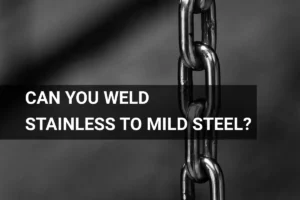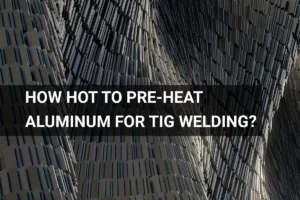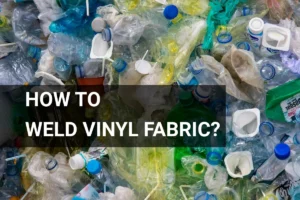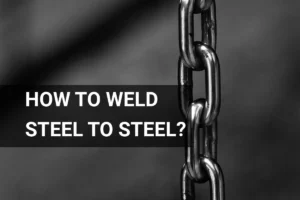Can You Weld Hardened Steel? Understanding Types, Techniques, and Challenges
Published on: January 13, 2025 | Last modified: March 4, 2025
By: Joe Carter
Hardened steel is steel that has been heat treated to increase its hardness. This process makes it tougher and more resistant to wear.
So, can you weld hardened steel? It’s crucial to understand this because welding can alter the strength and properties of the metal. I’ve seen many welders struggle when they don’t know the right techniques—or the right materials to use for specific tasks, such as steel welding.
In this article, you’ll learn about the types of hardened steel and their weldability, prerequisites for welding, steps to follow, precautions, types of welding methods, factors influencing weldability, common issues and troubleshooting tips, and aftercare for finished welds. You’ll also discover how to harden steel after welding and explore various use cases. Whether you’re curious about how to weld hardened steel to mild steel or contemplating can hardened steel be welded, we’ve got you covered!
Contents
- Can You Weld Hardened Steel?
- What is Hardened Steel?
- Types Of Hardened Steel and Their Weldability
- Prerequisites to Keep in Mind
- Precautions
- Steps for Welding Hardened Steel
- Types Of Welding for Hardened Steel
- Factors Affecting Weldability Of Hardened Steel
- Common Issues and Troubleshooting
- Aftercare, Inspection, and Advanced Tips for Welding Hardened Steel
- Heat Treatment Before and After Welding Hardened Steel
- Key Benefits Of Welding Hardened Steel
- Use Cases Of Hardened Steel Welding
- When to Try a Different Approach
- Frequently Asked Questions (FAQs)
- Conclusion
- Additional Reading
Can You Weld Hardened Steel?
Yes, you can weld hardened steel, but it’s tricky. The high carbon content makes it hard to fuse without cracking. Use preheating or post-weld heat treatment to avoid issues. Stick welding with low hydrogen electrodes works best.
What is Hardened Steel?
Hardened steel is a type of steel that becomes harder through heat treatment. This process involves heating the steel to temperatures between 800-1200°C (1470-2200°F) and then rapidly cooling it. The sudden temperature drop transforms the steel, increasing its hardness and strength. Hardened steel can reach over 60 HRC (Rockwell Hardness), making it much tougher than regular steel.
Can you weld hardened steel? It’s a tricky question that depends on various factors. In my experience, welding hardened steel isn’t straightforward. You often need specialized techniques to avoid cracking and maintain its integrity.
I’ve heard of friends successfully welding hardened steel to mild steel using the right methods and precautions. In one case, they used TIG (Tungsten Inert Gas) welding for clean and controlled heat input. A common concern is how to weld hardened steel to mild steel—you must manage the heat to prevent brittleness while achieving a solid joint. Choosing the right filler material is crucial!
Types Of Hardened Steel and Their Weldability
What are the types of hardened steel, and can you weld them?
-
Alloyed Hardened Steels
These steels have elements like chromium and nickel that enhance strength. Yes, you can weld alloyed hardened steels. Preheat the material to 200°F (93°C) and use a filler rod with similar strength, such as a 308L stainless steel stick. However, achieving flawless welds requires addressing potential imperfections like porosity, which can be a common challenge. Discover more about what causes porosity in welding to enhance your welding outcomes.
-
Carbon Steels
Carbon steels are common, containing varying amounts of carbon for hardness. You can definitely weld carbon hardened steels. Clean the surface, preheat to about 400°F (204°C), and use a suitable filler like E7018 rods. When tackling complex welding positions, mastering techniques for welding upside down can be essential to ensure strong and stable joints.
-
Tool Steels
Tool steels are designed for cutting and shaping, filled with carbon and other elements. You can weld tool hardened steels. To ensure a strong joint, preheat to 500°F (260°C) and use a filler like ER80S-B2 for strength and ductility. For those looking to master the vertical welds, especially uphill welding techniques, here’s how to weld uphill effectively.
-
Spring Steels
Spring steels are known for their elasticity and are often used in automotive applications. Welding spring hardened steels can be tricky. To maintain strength, preheat to 300°F (150°C) and use a nickel-based filler for added toughness.
-
Maraging Steels
Maraging steels are high-strength steels that undergo aging processes for toughness. You can weld maraging steels with care. Preheat to 400°F (204°C) and use ER312 filler to prevent cracking during cooling.
We covered types of hardened steel and their weldability here. Next, we will cover important prerequisites to consider.

Prerequisites to Keep in Mind
What do you need to start welding hardened steel?
- MIG Welder: You’ll need a quality MIG welder, like the Lincoln Electric Power MIG 210 MP. It provides the precise control required for welding hardened steel.
- Welding Wire: Use 0.035 in (0.89 Mm) ER70S-6 welding wire, such as the Hobart .030 in (0.76 Mm) wire. This type offers good strength when fusing hardened steel.
- Welding Rod: Choose E7018 or E6013 rods, like the Lincoln 7018 stick electrode. These rods provide excellent tensile strength, crucial for working with hardened steel.
- Induction Heating Equipment: Consider induction heating devices, such as the Telwin Induction Heater. This helps preheat the steel, reducing cracking while you weld.
- Anti-Spatter Spray: Use a product like Weld Aid Anti-Spatter to prevent spatter on your workpieces. Keeping the surface clean makes welding easier and improves results.
We’ve wrapped up essential prerequisites to keep in mind. Next up, we’ll look at important precautions to consider.
Precautions
Let’s cover essential safety precautions for welding hardened steel.
- Proper Ventilation: Good airflow reduces harmful gas exposure. Use exhaust fans or 3M respirators to prevent breathing hazards.
- Protective Gear: Always wear gloves, helmets, and flame-resistant clothing. Invest in specific gear like the Lincoln Electric K1013, which withstands high heat.
- Heat Control: Monitor temperatures constantly. Exceeding 1,200°F (650°C) can cause warping or unwanted hardening. Get a reliable Metrimeter Two-Color Pyrometer.
- Tool Maintenance: Regularly check your equipment for leaks or damage. A good welder lasts longer with brands like Miller, ensuring safer operation.
Remember, safety precautions aren’t optional—they’re crucial for your well-being.
That covers precautions for welding. Let’s now take a look at the steps for welding hardened steel.
Steps for Welding Hardened Steel
Here are the steps to successfully weld hardened steel and ensure strong joints.
-
Preheat the Steel
Preheating is crucial. Set your preheating temperature between 150°C and 250°C (302°F and 482°F) to reduce thermal shock and prevent cracks. Focus on the thicker sections to avoid warping during welding. It is also important to protect your eyes during these operations because welding can adversely affect your vision. Can welding hurt your eyes is a question that emphasizes the need for proper eye protection.
Use a propane torch or an electric preheat source. Check the temperature regularly to maintain it steadily. Underestimating this step can lead to joint failure.
-
Choose the Right Filler Material
Select the correct filler material. When welding hardened steel, use a filler that matches or is slightly softer than the base metal. A commonly used rod is E7018 for stick welding, as it provides a good balance of strength and ductility.
For MIG welding, a solid wire like ER80S-D2 is better for higher strength. A mismatch can lead to weak welds that won’t hold up under stress.
-
Control the Heat Input
Carefully manage your heat input to avoid distorting the weld. Use a lower amperage setting to create a tighter arc. Aim for about 5 to 10 joules per mm of weld bead at most.
A speed of 10 cm per minute works well with MIG welding on 6 mm thick steel. I recommend using a ‘stringer bead’ technique instead of weaving, which minimizes heat-affected zones and strengthens the joint.
-
Utilize Proper Welding Techniques
Use techniques designed for weldability. When MIG welding, hold the gun at a 10 to 15-degree angle for better penetration. Advances and pauses allow for improved cooling and joint formation.
If you’re stick welding, use the dragging technique instead of pushing, which helps control the arc. Maintain a steady posture to prevent inconsistent welds.
-
Allow for Post-weld Heat Treatment
After welding, heat treatment enhances joint ductility. Raise the welded areas to around 600°C (1112°F) for an hour, then cool slowly in an insulated area.
This process prevents cracking and improves the weld’s overall strength. You might want to harden the steel again after cooling; consider quenching techniques suited to your specific application.
We’ve wrapped up the steps for welding hardened steel here. Next up, we’ll look at the types of welding for hardened steel.
Types Of Welding for Hardened Steel
Let’s explore various welding techniques: MIG welding, TIG welding, Stick welding, and Submerged Arc welding.
-
MIG Welding
MIG welding, or Gas Metal Arc Welding (GMAW), uses a continuous wire feed as an electrode. You can weld hardened steel with MIG, but it requires care. An argon and CO2 mix helps prevent distortion.
-
TIG Welding
TIG welding, or Gas Tungsten Arc Welding (GTAW), provides precision for hardened steel. You’ll typically use a non-consumable tungsten electrode and argon gas. It’s excellent for thin materials and keeps the workpiece clean.
-
Stick Welding
Stick welding, or Shielded Metal Arc Welding (SMAW), uses a flux-coated electrode. It’s suitable for outdoor work, even in windy conditions. Proper technique is essential to ensure a strong bond.
-
Submerged Arc Welding
Submerged Arc Welding (SAW) uses a continuous wire feed and a blanket of granular flux. This process minimizes smoke and splatter, making it ideal for thick materials. It’s efficient but requires skilled control of heat input.
-
Gas Tungsten Arc Welding
Gas Tungsten Arc Welding (GTAW), similar to TIG welding, is for professionals. It allows precise control of the molten pool, crucial for hardened steel. The clean welds make this method a top choice for specialized applications.
Factors Affecting Weldability Of Hardened Steel
What factors influence welding hardened steel? Let’s break it down simply.
-
Steel Composition
The chemical composition of hardened steel greatly affects its weldability. High carbon content, typically above 0.5%, can cause cracking during welding if not managed properly.
-
Thickness Of Material
Thicker materials require more heat and care to weld. For instance, welding 1-inch (25.4 Mm) steel needs more heat input than 1/4-inch (6.35 Mm) steel, impacting your welding technique.
-
Pre-weld Heat Treatment
Preheating hardened steel to about 300°F (150°C) reduces the risk of cracking and improves fusion during welding.
-
Welding Technique
Your choice of welding method matters. MIG, TIG, or stick welding each has its advantages and disadvantages, especially regarding heat input and skill requirements for thick materials.
-
Filler Material Selection
Selecting the right filler metal is crucial. For example, ER70S-6 works well for welding hardened steel, ensuring the weld integrates with the base metal.
Common Issues and Troubleshooting
Let’s look at specific issues with hardened steel.
-
Cracking After Welding
Hardened steel can crack due to rapid cooling. Look for visible cracks. To prevent this, preheat to 400°F (204°C) and control the cooling rate.
-
Inadequate Penetration
Hardened steel may show incomplete penetration due to improper settings. Adjust the amperage and angle for better results.
-
Porosity in Welds
Hardened steel can trap gas, causing porosity. Inspect for small holes. Clean the surface before welding and maintain proper shielding gas flow to minimize this issue.
-
Distortion Of Workpiece
Hardened steel may warp during welding. Check for misalignment. Use clamping fixtures or tack welds to keep alignment during the process.
-
Heat Affected Zone Problems
Hardened steel can become brittle in the heat affected zone (HAZ). Look for changes in material properties. Preheating and post-weld heat treatment can improve HAZ integrity.
Aftercare, Inspection, and Advanced Tips for Welding Hardened Steel
Here are important aftercare suggestions, inspection advice, and expert tips tailored for welded hardened steel.
Aftercare Tips
After welding hardened steel, cool the metal slowly to avoid cracks. Use a heat treatment furnace set to 500°F (260°C) for stress relieving, lasting 1 hour. Apply a rust inhibitor like CRC 3-36 to protect the weld and surrounding area. This maintains structural integrity and prevents corrosion.
Inspection
Inspect welded joints meticulously for undercutting, which shouldn’t exceed 10% of the weld width. Use a fillet weld gauge to check angle tolerances—deviations of more than 2° can weaken the joint. I recommend the GE 87103 ultrasonic thickness gauge to detect internal flaws that are otherwise invisible.
Expert Tips
For professionals, preheating the steel to about 200°F (93°C) enhances weld penetration. Use low-hydrogen electrodes like AWS E7018 to minimize cracking during cooling. Finally, use a digital thermocouple to monitor temperatures precisely, ensuring optimal conditions throughout the welding process.
Heat Treatment Before and After Welding Hardened Steel
Understanding heat treatment can significantly improve your welding results. Here’s a detailed breakdown of the process.
| Type of Heat Treatment | Purpose | Recommended Temperature (°C / °F) | Duration |
|---|---|---|---|
| Preheating | Reduces thermal shock, prevents cracking | 150-250°C / 302-482°F | 15-30 minutes |
| Post-weld Heat Treatment | Enhances ductility, relieves stresses | 500°C / 932°F | 1 hour |
| Stress Relieving | Minimizes residual stresses from welding | 600-700°C / 1112-1292°F | 1-2 hours |
| Hardening | Increases hardness after welding | 800-1200°C / 1472-2192°F | Quench immediately |
When you preheat, you’re preventing those nasty cracks. Post-weld treatment helps maintain that strength! Plus, if you want to harden your steel back up after welding, always remember the quenching process to regain that hardness. What a powerful set of tools at your disposal!
Key Benefits Of Welding Hardened Steel
The main benefit of welding hardened steel is its incredible strength. Friends have told me how it worked wonders for their heavy-duty projects, providing a resilience you can’t achieve with regular steel.
Additionally, it offers better joint integrity, improved wear resistance, enhanced load-bearing capacity, and the ability to repair and reinforce existing structures.
Use Cases Of Hardened Steel Welding
I know people who’ve used hardened steel welding for heavy machinery repairs. It has many applications, such as:
- Mining Equipment: It’s often used to repair excavator buckets, which must withstand extreme wear. Welding hardened steel ensures durability and is popular in the mining industry for long-lasting repairs.
- Construction Tools: Welding hardened steel into concrete breakers helps them resist impact. The demand for reliable construction tools drives the use of this technique.
- Automotive Industry: It’s used to weld suspension parts in race cars. The added strength is crucial for performance, making this method popular in high-end racing vehicles.
- Aerospace Components: Welded components in aircraft must endure harsh conditions. Using hardened steel improves overall strength, making it essential in aerospace manufacturing.
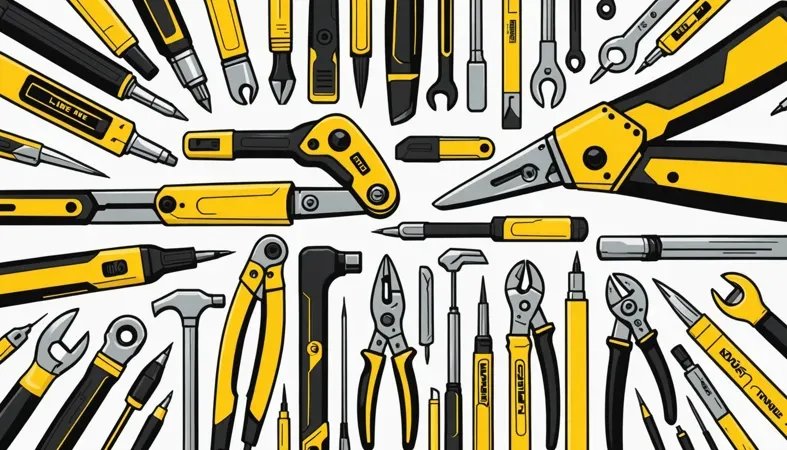
When to Try a Different Approach
Looking for alternatives to joining hardened steel? You might consider using MIG or TIG welding methods, which are effective for many projects. For example, Hardox 450 has a reputation for durability; it often performs better with specific rods, like the Hobart 770408 7018 or Lincoln 7018. Here’s what my expertise has taught me: choosing the right welding method can save you from cracking and distortion. Understanding different welding positions such as 1F, 2F, 3F, and 4F welding can enhance your technique and project success.
If you want to avoid welding altogether, consider mechanical joining methods such as bolts or rivets. These options provide strength without the hassle of heat treatment, which cold operations often can’t handle. Plus, using products like Loctite for securing joints can enhance the overall connection too!
Frequently Asked Questions (FAQs)
Here are some common questions I typically get asked regarding welding.
What Happens if You Weld Hardened Steel?
When you weld hardened steel, you risk weakening the material due to heat-affected zones. These zones can reduce hardness and strength, particularly if not managed correctly. It’s essential to control heat input to minimize these effects.
What Welding Rod Do I Use for Hardened Steel?
For welding hardened steel, select a rod that matches the base metal and withstands high heat. Stainless steel rods, like 309 or 312, are often recommended. These can help maintain structural integrity and provide a strong weld.
Can You Weld Tempered Steel?
Yes, you can weld tempered steel, but expect some mechanical properties to change. The heat from welding can temper the steel, leading to less hardness. Preheating before welding and post-weld heat treatment can help maintain overall strength. When considering how protective gear interacts with light, especially during events like solar eclipses, one might wonder if welding masks can safely view an eclipse.
What Metals Cannot Be Welded?
Some metals can’t be welded effectively, including certain grades of cast iron and certain stainless steels. These metals can crack during the welding process due to different thermal expansion rates. Always check compatibility before welding.
How to Harden Steel After Welding?
To harden steel after welding, you can use a quenching process. This involves heating the steel to a specific temperature (Typically Around 800°C or 1,472°F) and then rapidly cooling it in water or oil. This process increases hardness and strength.
Can Hardened Steel Be Welded?
Yes, hardened steel can be welded, but considerations must be taken to preserve its properties. Use appropriate techniques and filler materials suitable for maintaining hardness. Understanding the metallurgical changes that occur during welding is crucial.
Conclusion
We’ve gone through a lot, thank you for sticking it out. We covered what hardened steel is, its types and weldability, prerequisites before you start, steps for welding, and precautions to take. We also discussed types of welding suited for hardened steel, factors that affect weldability, common issues, and how to troubleshoot, plus aftercare tips.
So, can you weld hardened steel? Yes, you can, but be informed. Factors like the type of welding (Stick, MIG, TIG), pre-heating, and post-weld treatment (Like Hardening Methods) make a difference. Knowing how to properly weld hardened steel means you can create solid joints without compromising its strength.
For more insights and resources on welding techniques and tips, I hope you explore what What is Welding has to offer you.
Additional Reading
- Lincoln Electric. (2020). The Procedure Handbook of Arc Welding (15th ed.). Cleveland, OH: Lincoln Electric Company.
- American Welding Society. (2021). AWS B2.1: Standard for Welding Procedure and Performance Qualification. Miami, FL: AWS.
Joe Carter is a retired welding professional with over 40 years of hands-on experience in the industry, spanning ship repair, structural welding, and even underwater projects. Joe is a master of MIG, TIG, and Stick welding. Passionate about mentoring the next generation of welders, Joe now shares his decades of expertise and practical insights to help others build rewarding careers in welding.
American Welding Society, Hardened Steel, Heat Treatment, Metalworking, MIG Welding, Welding, Welding Challenges, Welding Techniques, Welding Wire

